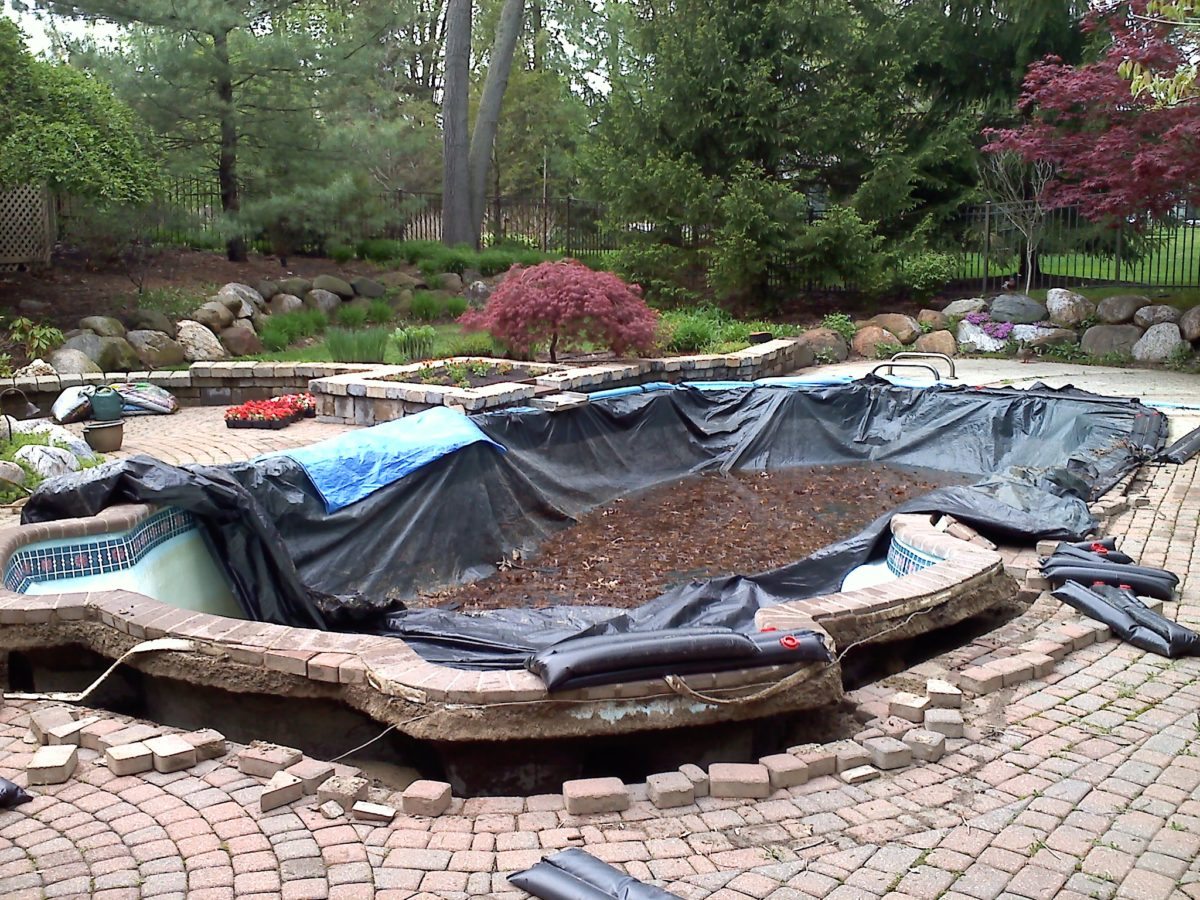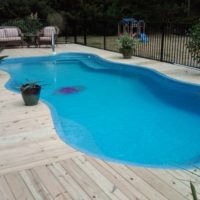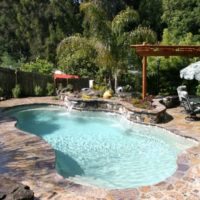NEVER Drain Fiberglass Pools!!!
When it comes to in-ground pools, fiberglass swimming pools are hands down the best option whether you live on the Outer Banks, Currituck, Camden, or Elizabeth City as they are easy to maintain and require very little chemicals. When compared to vinyl and concrete, fiberglass pools have the lowest lifetime cost – which makes fiberglass the best option for an in-ground pool.
While there are many myths about fiberglass pools, the one thing you should NEVER EVER do is DRAIN your fiberglass pool without professional help. Let me say that again, NEVER drain your fiberglass pool for any reason. In fact, we recommend NEVER letting the water level drop more than 2-3 inches below the skimmer!
Unfortunately, every year we get phone calls from homeowners who have emptied the pool for one reason or another and it’s a big NO-NO! So why do people sometimes drain their pool? Here’s a few reasons we’ve heard in the past.
-
Dirty, Smelly Pool Water
Here’s the deal folks – you have to clean the pool manually! It’s extremely, extremely rare that one might have to drain their fiberglass pool. Sometimes when there is a natural disaster or if the pool has been neglected for several years, draining the pool might be the best option – but again that is RARE! If you have stinky, nasty water you can typically make it crystal clear within a few days by simply adding chemicals, vacuuming and backwashing. If you aren’t sure – hire a professional to clean it for you!
-
Someone moves into a home or rents a home with a fiberglass pool
I actually got the inspiration to write this blog for reason #2. I received a call from a distressed homeowner today who had a rental property with a long term tenant. The property is about 2 hours away from the owner so they weren’t able to check in as often as they’d like. Long story short, the tenant drained the pool in an area notorious for high water tables – and now the pool and pool deck are ruined! If you have a rental home with a pool, PLEASE take the time to talk to your tenants and/or pool cleaners and tell them to NEVER EVER drop the water more than 2-3” below the skimmer without seeking assistance from a professional pool installer and/or the manufacturer!
If you buy a home with a fiberglass pool, be sure to ask the homeowners who installed the pool so they can seek their professional advice as to how to best care and maintain the pool. BE EDUCATED! It will save you tons of time, headaches AND money! reason…..again, big no-no! (We’re now printing labels to put on filter systems to prevent this from occurring in the future).
-
A foreclosure home that’s been abandoned for years
Here on the Outer Banks and in surrounding areas, there are still many short sales and foreclosures. Some of these properties have been vacant for years. Just think what a pool must look like that’s just been sitting there for a few years – YUCK! While it might seem like a good idea to just start with fresh water via draining your pool and filling it back up – it is NEVER a good idea to drain your pool without professional help!
OK – What do I do if the pool REALLY needs to be DRAINED?
If your pool truly needs to be drained, first contact the manufacturer of the fiberglass pool. They can direct you to a local fiberglass pool professional to assist you. Very few pools can be drained without any precautions – and most will incur some damage if the pool is drained OR if water is dropped too low without taking the appropriate measures. It is a labor-intensive process and should ONLY be done with professional, qualified help!
What are some precautions or considerations?
First and foremost, it is important to know what the water table is like in your area. If you are in a super sandy area where the hole remains dry, then you are less likely to damage the pool by draining. Unfortunately, some folks think if there was no water when the pool was dug and set then there is no water there! NOT TRUE! Lots of things impact the water table, especially the amount of rain in your area. The type of soil is also important to consider. Sandy soils allow water to drain more quickly than areas with lots of clay. Clay drains very, very slowly. To say it another way, sandy soil is the most permeable, clay is the least. If there is a substantial amount of water, it might be a good idea to wait until a dryer part of the year when the hole is likely drier.
In addition, the pool must be properly braced as they are engineered to be full of water. Lots of “things” go into how to properly brace the pool, which again means you need the help of the manufacturer and a qualified professional fiberglass pool installer.
What kind of damage can incur if I drain the pool?
Myth #1 is that the fiberglass pool pops up. While it isn’t impossible, we have yet to see this happen – and we’ve installed nearly 300 pools in the last decade. However, what we typically see when people drain or drop their water levels beyond 2-3” below the skimmer is bulging side walls and floors along with splits in pool floors. The good news is – this can be repaired – but can be costly.
Our advice – NEVER drain your fiberglass pool for any reason without seeking assistance from the manufacturer and/or a professional fiberglass pool installer. Doing it yourself can void your warranty and be a very, very costly mistake.
Lastly, just an FYI – these principles apply to concrete and vinyl pools as well, both of which can “float”. It is necessary to take precautions with ANY TYPE of in-ground pool.






